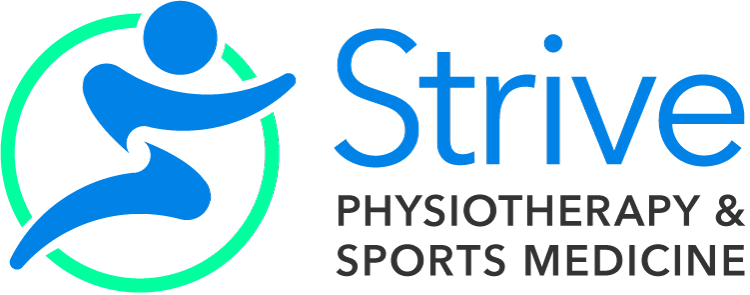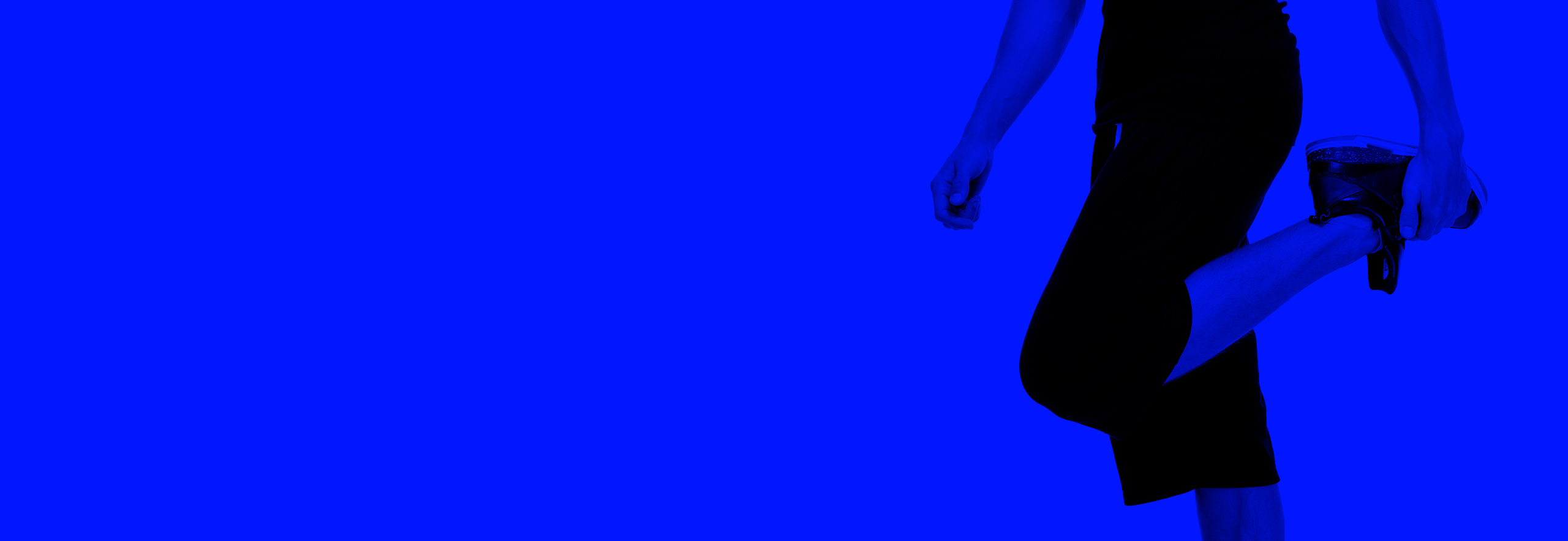What is greater trochanteric tendinopathy/bursitis?
The greater trochanter is located at the top and slightly to the outer side of the thighbone or the femur and is a common place where the gluteus muscles attach as well as a common site for lateral hip pain. The greater trochanteric bursa lies just beneath the gluteus muscles and thus lateral hip pain has traditionally been referred to as trochanteric bursitis however this is rare in isolation and is usually co-presenting with tendon pathologies. A tendinopathy occurs when there is degeneration of the collagen that forms the tendon. The gluteus muscles are able to transmit load placed on them through their tendons however when the tendons are injured the ability to do so becomes painful thus, leading to lateral hip pain.
What causes greater trochanteric tendinopathy/bursitis?
Greater trochanteric tendinopathy can occur due to multiple reasons such as overuse of the glute muscles, mechanical overload due to increased training intensity, failed healing post-injury, or compression of the tendons such as with a fall. However, this can also occur due to other lower limb or lower back injuries thus resulting in the tendons changing how they mechanically function.
Common symptoms include:
- Pain and tenderness directly over the greater trochanter (the lateral hip area) that can extend down the lateral thigh and into the top of the lower leg
- Pain worse at night, lying on the injured side
- Pain that is aggravated by activities such as walking or running particularly uphill, navigating stairs and completing single-leg tasks such as standing on one leg to dress
- Pain may occur following prolonged sitting as well as for the first few steps after rising to stand
How can physiotherapy help my greater trochanteric tendinopathy?
Your Strive Physiotherapist has many options to help treat your tendinopathy such as hands on techniques to address joint and muscle mobility and pain, specific exercises to balance the stress on the painful tissues and shockwave to help with pain and tissue remodelling. A key to successfully managing this condition begins with identifying and minimizing painful positions and activities that can increase the stress on the tissues of the hip. The next step is to start with exercises that will gradually improve the tissues tolerance and increase your strength. The exercise program will have a combination of exercises to improve how you move (ie: motor control exercises) and to improve your endurance and ability to work against heavier resistance. Your Strive Physiotherapist will use techniques such as soft tissue massage, acupuncture and/or dry needling, to work on the muscles around the area that may be contributing to pain.
You will be given an individualized exercise program that is tailored to your needs to assist in strengthening muscles to better support the area as well as to assist in your day-to-day activities. Your Strive Physiotherapist will assist you in finding a good balance between challenging exercises while also promoting healing to ensure we are not overloading the area. Your physiotherapist can tailor their approach to help you reach your goals and are happy to communicate and collaborate with other members of your health and wellness team, such as your personal trainer, Physician or naturopath.
How can a Pedorthist help my greater trochanteric tendinopathy?
A Pedorthist can assess how your lower leg and foot are moving as a whole chain and often this can allow for better functioning up the chain. Based on your activities your Strive Pedorthist can offer suggestions on footwear and footwear modifications that may assist you in recovering from your injury. In some cases, custom orthotics may be recommended to provide your foot and lower leg with improved support.
How can Massage Therapy Help my greater trochanteric tendinopathy?
Massage therapy can be used to treat both the direct and indirect causes of your greater trochanteric tendinopathy pain. Your Strive Massage Therapist will work on the muscles that may be contributing to your symptoms thus allowing them to release tight muscles through the lower back, hips, and upper legs that may be contributing to your pain. At Strive we work as a team so Your Massage Therapist will communicate with your Physiotherapist to ensure both members of your team are working together to help you get back to your normal.
How can Sports Medicine/Physiatry help my greater trochanteric tendinopathy?
In most cases, the conservative management described above is effective in assisting in overcoming your symptoms and can help you return to your activities. However, in some cases, you may need a physiatrist and/or sports medicine physician to complete a thorough assessment of the area. If appropriate Your Strive Sports Medicine Physician or Physiatrist will send you for medical imaging such as a Diagnostic Ultrasound to determine the extent of the injury. If necessary, your Strive Sports Medicine Physician or Physiatrist may also send you to an orthopedic surgeon for a consultation.
Your Strive Sports Medicine Physician or Physiatrist may also decide to administer a cortisone injection to help ease some of the pain and address the inflammation in the area.
How long will it take for me to recover from my greater trochanteric tendinopathy?
For someone with greater trochanteric tendinopathy, it typically takes around 3-6 months for an individual to feel like they are starting to get closer to their baseline. Rehabilitation will begin with a progressive strengthening program tailored to the lower extremity and the glute muscles. Tendons prefer to be loaded thus; the goal is to provide enough load to the tendons for them to begin to heal without any large increases in pain from week to week. As strength begins to increase and pain decreases your tissues will be able to tolerate more load!
Although it can sometimes be a long journey your Strive team is here to support you along the way and assist you in developing strategies to manage your pain!
What are the Best Exercises to help with my greater trochanteric tendinopathy?
To get started with some exercises to address your greater trochanteric tendinopathy, check out the greater trochanteric tendinopathy home exercise program.
Please keep in mind that these exercises were designed as a starting point to address your symptoms and should not be performed or continued if they cause or increase your pain in any way. The exercises do not replace the value of being assessed by a Health Professional. If you find you need help, let a Strive Health Professional help you, book your time today!
What can I do to treat greater trochanteric tendinopathy at home?
In order to assist in the healing process, try to use activity modification by avoiding things that aggravate your symptoms or modifying the order or way in which you do them for the time being.
For example, if you notice that every time you go on a daily walk your symptoms are much worse then maybe try to decrease your walking mileage for the time being or choose activities such as swimming that decrease the load on the tissue. This will allow your tendons to heal and build up strength in the muscles around the area before returning to your activity so that you’re able to do them more effectively.
Self-massage or using a tennis ball on the glute muscles can be beneficial in loosening up the tissues and allowing for some pain relief for the time being as well.
Greater trochanteric tendinopathy: Beginner Exercises
Important Note: These exercises were designed as a place to start to address your symptoms. These exercises should not be performed or continued if they cause or increase your pain in any way. Using these exercises for self-management of your symptoms does not replace the value of being assessed by a Health Professional.

This content was created by Harneet Somal in 2023 as part of the requirements for the University of Toronto Department of Physiotherapy student placement.
Strive is dedicated to empowering people through education and proud to support multidisciplinary health professional education

Nicole Cesca
BSc (Honours) in Biochemistry, MScPT, PhD student
Registered Physiotherapist
As a past varsity golfer, Nicole is dedicated to assisting golfers recover from and prevent injury. Improving one’s body-swing connection and return to the course pain free is a focus of her management plan. Nicole is devoted to helping others improve their quality of life and being able to function as the healthiest version of themselves. Nicole believes in a patient-centred and holistic approach to physiotherapy treatment where she enjoys working collaboratively with her patients to assist them in reaching their physiotherapy goals. Nicole is passionate about orthopaedic and neurological physiotherapy and plans to advance her clinical practice by continuing to pursue courses in manual therapy, integrated dry needling and acupuncture. Nicole is dedicated to being a lifelong learner and is currently completing her PhD in Rehabilitation Science with a Collaborative Specialization in Neuroscience at the University of Toronto.


